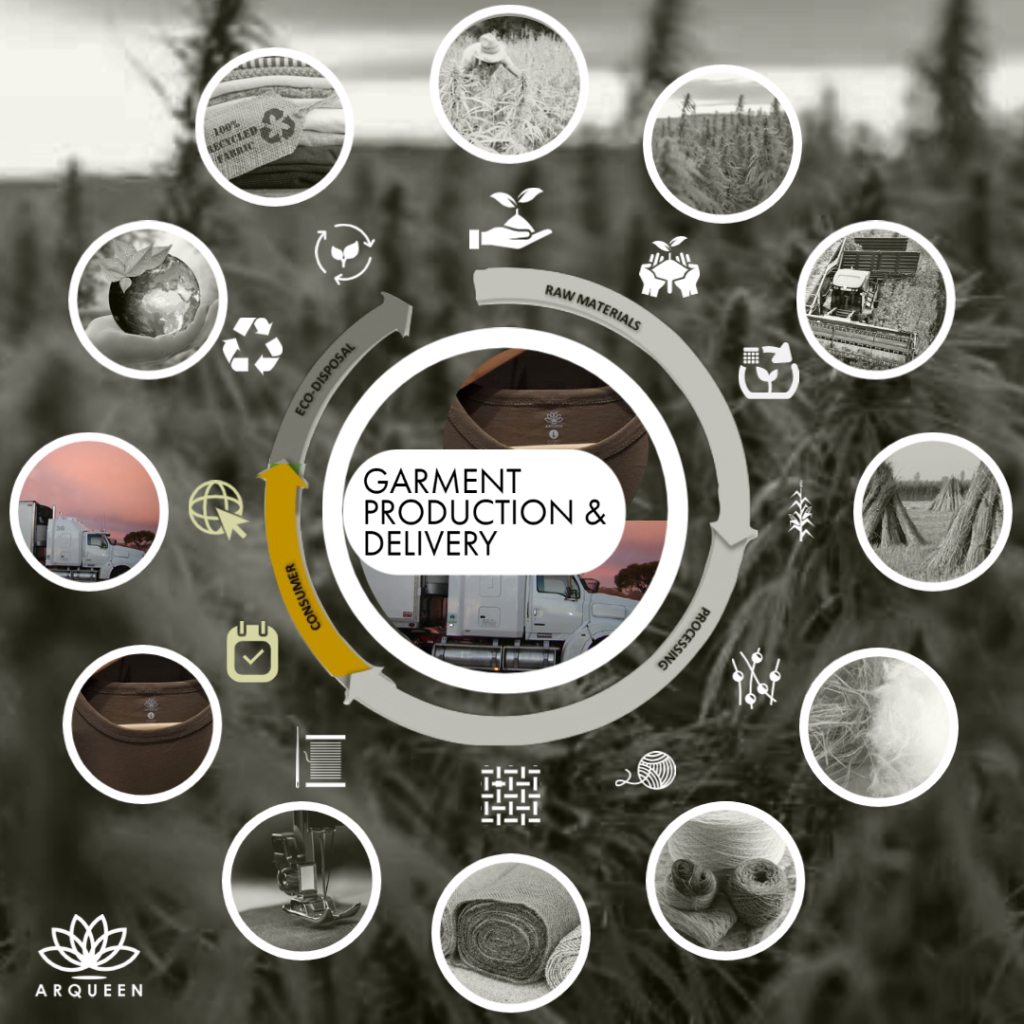Garment production is an organized activity consisting of sequential processes such as laying, marking, cutting, stitching, checking, finishing, pressing and packaging.
1. GARMENT PRODUCTION
Garment production consists of multiple steps. Leading fast-fashion brands have the resources to produce hundreds and thousands of items of clothing within a few weeks once designs have been approved. For smaller brands, producing garments takes a little bit longer.
Here’s a step-by step guide to garment production:
A. PRE-PRODUCTION
Pre-production consists of concept and design, made to measure, fabric and trim sourcing, pattern making, sampling, and fitting.
• CONCEPT AND DESIGN
Our team will discuss ideas with and advise on fabrications and suitable printing methods to develop the technical drawings and tech packs that will bring your ideas onto paper and to life. The technical packages include illustrations and specification sheets.
• MADE TO MEASURE
In an environment where items are custom made to an individual’s unique style and measurements, it’s important to provide the perfect fit garment in a timely fashion. CLO3D and Gerber’s AccuMark® Made-to-Measure (MTM) system helps us manufacture custom-fitted garments.
• FABRIC AND TRIM SOURCING
After the designs have been finalized, our team will help source the fabric needed to bring them to life. Our team can provide a list of our in-house fabrics and materials or suggest our trusted textile suppliers that can sell a variety of products.
• PATTERN MAKING
Our skillful pattern makers offer both paper flat patterns and digital patterns using software to draw and represent your designs. In addition to creating the pattern, we can also help with the digitization of your existing hard copies as well as the revision and grading of the patterns according to measurement tables.
• SAMPLING
Samples are the prototype of a creation. They are sewn individually and used to test the garment in case any pattern adjustments are necessary.
B. PRODUCTION PLANNING
The production planner in the garment factory will schedule all activities in advance. The planning team will ensure that all activities are completed on time. As the batch is being produced, the team will fill out the details on a time and action calendar.
• CUTTING PROCESS
Fabric is by far the most expensive item when it comes to garment manufacturing. Garment manufacturers have the responsibility to make sure that the purchased fabric is being utilized fully. The pattern makers and the cutters on the floor have to ensure that there is minimum wastage when cutting fabric.
Our vision is to use laser-cutting for greater efficiency and to prevent wastage.
• MANUFACTURING AND QUALITY CONTROL
The amount of time needed to manufacture the items in your line will depend on the complexity of the designs; the more complicated the design, the longer it will take to manufacture.
We will carry out quality checks during the manufacturing process and report to our internal fashion house. Quality checks are needed to catch and fix errors in a timely manner.
Once production is completed, your company will be given time to review the pieces and check for quality. You have the right to reject items and send them back to the factory if they don’t meet your standards and request replacements.
2. DELIVERY
After the items have been reviewed by the client, the rest of the order will be delivered to warehouses or individuals.

